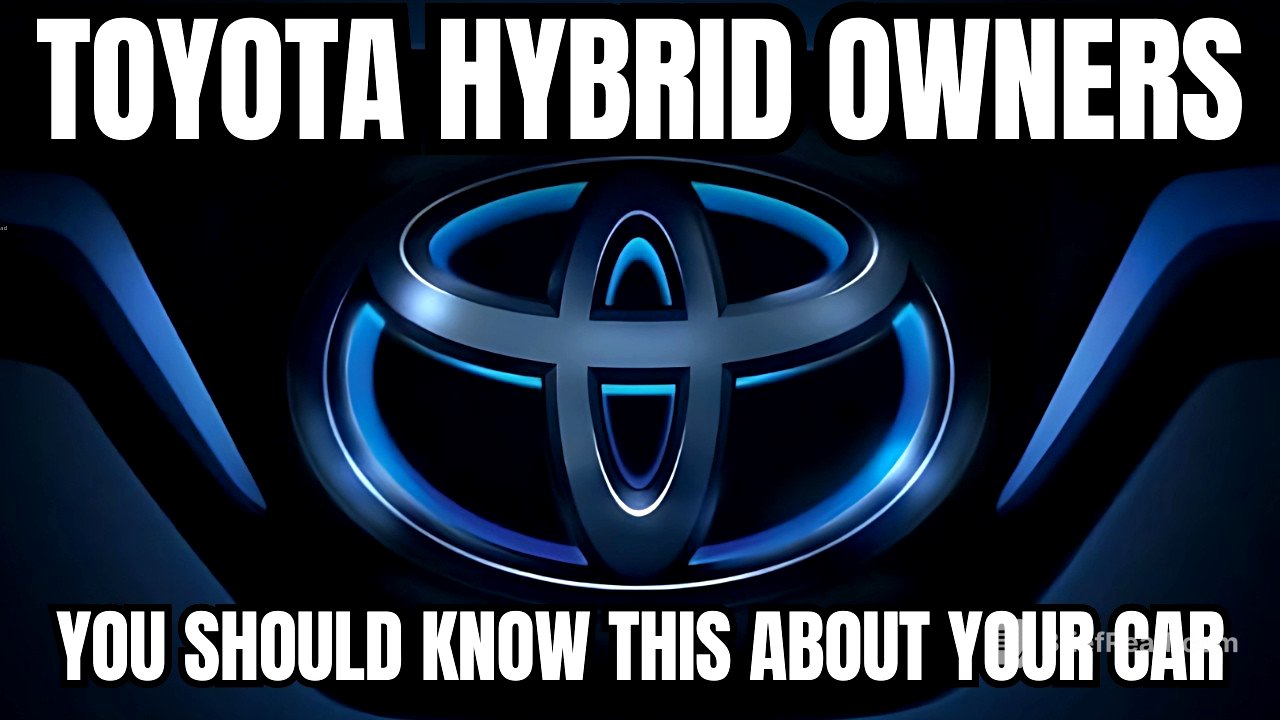TLDR;
This video provides essential information for Toyota hybrid owners, addressing common concerns and unique characteristics of these vehicles. It covers topics such as brake feel, hybrid battery failure, unusual noises, the meaning of the "ready" light, EV mode, vehicle rocking, hybrid battery longevity, shifter function, and refueling peculiarities. The video aims to clarify misconceptions and provide practical knowledge to enhance the ownership experience.
- Hybrid brake systems use regenerative braking, which can cause a unique "nose dive" feeling at slow speeds.
- Hybrid cars can still be driven if the hybrid battery fails, but performance and fuel economy will be significantly reduced.
- Unusual noises like whining or buzzing are often normal and related to the hybrid system's operation.
- Maintaining a clean hybrid fan filter is crucial for battery longevity.
- The shifter primarily engages the parking pole, and the car's movement is controlled by the electric motor.
- Refueling requires prompt action due to the evaporative emission system.
Brakes Feel Strange [0:33]
Toyota hybrids utilize a regenerative braking system that charges the battery when the brakes are applied. A sensor determines the amount of braking force needed, and the computer decides how much regenerative braking to apply, supplementing with hydraulic brakes as needed. This system can create a unique brake pedal feel, especially at slow speeds (5 mph or less), where a sudden switch to full hydraulic brakes can cause a "nose dive." This sensation is normal for hybrids. Hybrid brakes also tend to last longer due to the use of regenerative braking, and hydraulic brakes can be tested by putting the car in neutral while driving.
What Happens When The Hybrid Battery Fails? [3:38]
If a hybrid battery fails, all the warning lights on the dashboard will illuminate. The car will still be drivable, but the engine will run constantly to preserve the remaining battery charge for starting the engine, as hybrids do not have traditional starters. This results in reduced power and poor gas mileage. Reverse functionality may also be limited since it relies on the hybrid battery. The car will continue to start and run until the battery completely fails, which is rare, as usually only one or two cells weaken.
The Sounds They Make Are They Normal? [6:01]
Hybrids produce unique noises not found in other cars. A common concern is a whining noise heard while coming to a stop, which is often mistaken for a failing transmission. However, this noise is normal and is caused by the motor spinning during regenerative braking. Another typical sound is a buzzing noise heard when pressing the brake pedal or opening the driver's door. This is the brake system priming itself, as the brake pedal is not directly connected due to regenerative braking.
What Does The Ready Light Mean? [7:25]
The "ready" light illuminates when the hybrid car is on and running, indicating that the car is ready to drive. This light was introduced in the first-generation Prius because the engine does not always start immediately. Modern hybrids will automatically shut off after one hour if left running with the engine off, serving as a safety feature.
What is EV Mode? [8:26]
EV (Electric Vehicle) mode forces the hybrid system to operate solely on electric power. However, it has limitations, such as a speed limit of 25 mph and restrictions on hard acceleration. EV mode is intended for short distances in quiet environments, like parking lots or garages. Some newer models have proximity speakers that emit noise to alert pedestrians, reducing the "quiet" aspect of EV mode.
They Will Roll back and Forth [9:48]
Hybrids may rock back and forth when the engine starts. This occurs because the motor used to start the engine (MG1) transfers motion through the transmission, causing the car to rock. This is normal, but it's why hybrids should not be left in neutral for extended periods. In neutral, the parking pole is disengaged, and the car could roll if the engine starts to recharge the hybrid battery.
How to Make the Hybrid Battery Last Long? [11:49]
To prolong the life of a hybrid battery, it is crucial to maintain a clean hybrid fan filter. These batteries are air-cooled, and the fan can become blocked by lint and debris, causing the battery to overheat. Modern Toyota hybrids have filters that should be checked and cleaned periodically to ensure proper airflow and prevent overheating, which can shorten the battery's lifespan.
What Does the Shifter Do? [13:14]
The shifter in a Toyota hybrid primarily engages the parking pole. In models with a physical shifter, it mechanically engages the parking pole, while in models like the Prius, it sends an electrical signal to engage a motor that does so. The shifter's main function is to indicate the selected mode (drive, reverse, neutral, park) to the computer. Unlike traditional automatic transmissions with a torque converter, hybrids do not creep forward unless the computer intentionally applies power to the motor when the brake pedal is released.
Refueling is Slightly Different [16:06]
Refueling a hybrid involves a slightly different process due to the sophisticated evaporative emission system designed to trap gasoline vapors. When the fuel release button is pressed, it takes a few seconds for the fuel door to open, and a message indicating "ready to refuel" appears. This is because a valve isolates the vapor. If the fuel door is left open for more than 30 minutes without refueling, the valve will close, potentially causing fuel to overflow when refueling is attempted. Therefore, only open the fuel door when ready to refuel.









